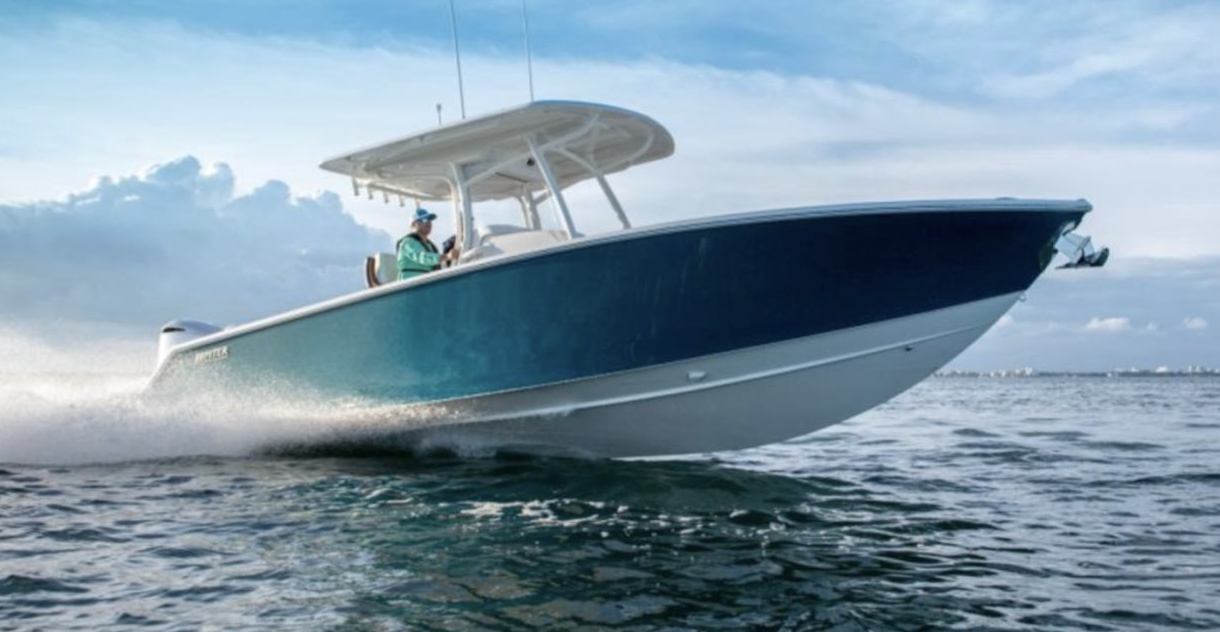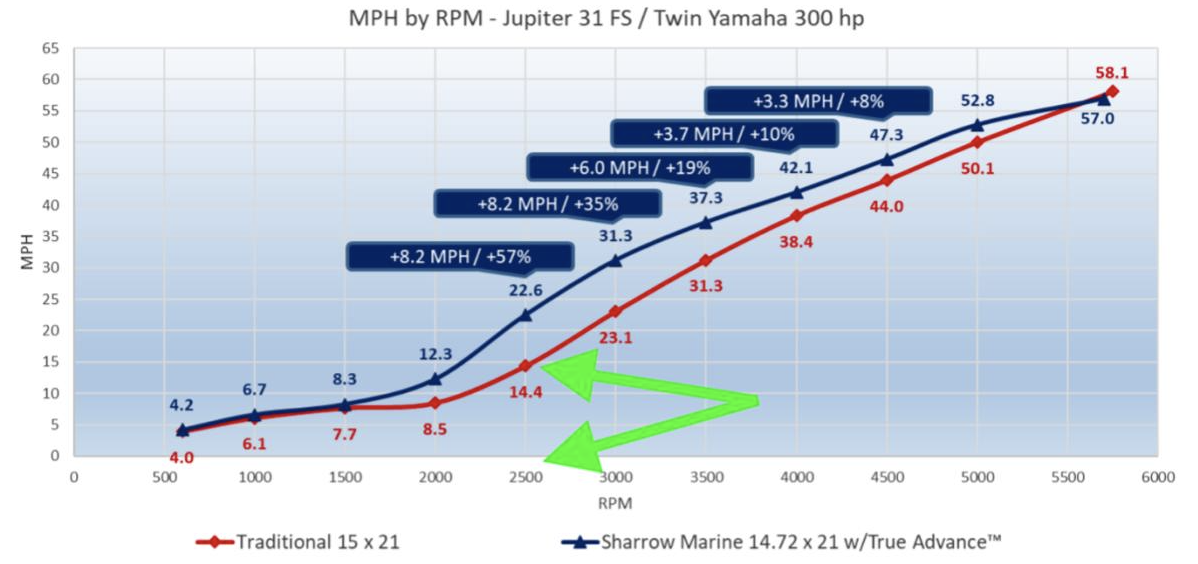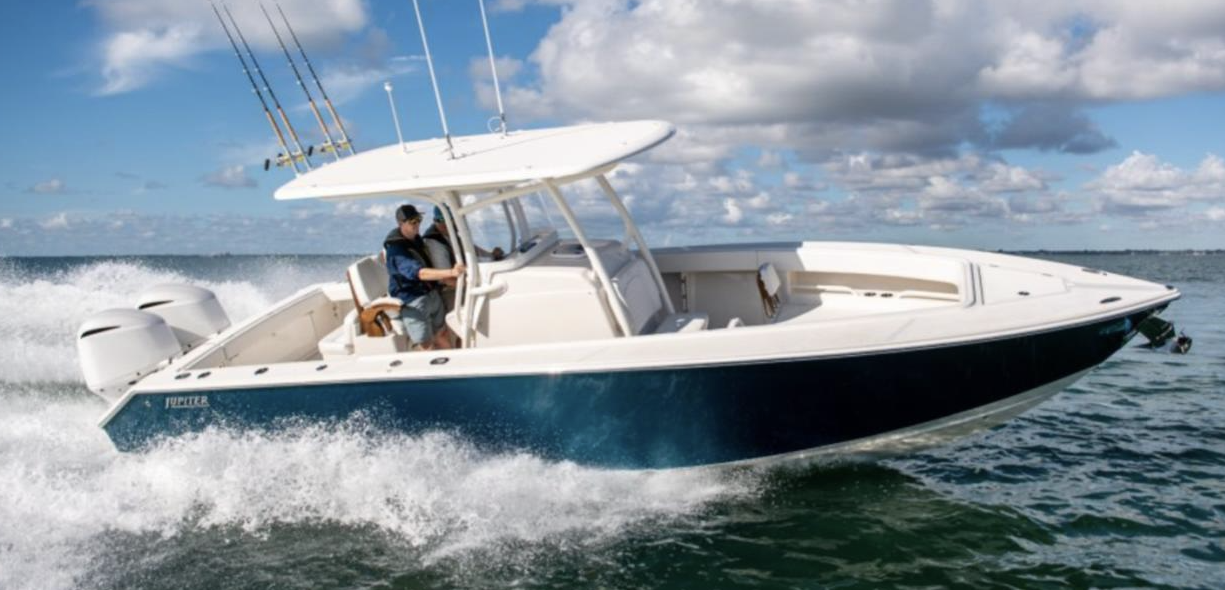Jupiter 31 FS -- 19% Faster at 3500 RPM w/Sharrow Props

Since the Jupiter 31 FS was first introduced in 1989, outboard engine technology in the US has gone from 2-stroke to 4-stroke, and then several generations of improvement by most brands. That means that hundreds of Jupiter 31s are in the hands of owners who are possibly considering re-powering to get better fuel economy and range, to say nothing of increasing the horsepower from that of the legacy engines. But there is another, less costly solution.
The Jupiter 31 has a long history since it was first launched in 1989, and has gone through several iterations, including in 2002 when owner Carl Herndon brought her into the 21st century, revamping the interior. More recently the 31 has been replaced by the Jupiter 32. Nevertheless, there are hundreds of 31s in the field that could benefit from re-propping, which is a lot less expensive than repowering.
The data shown here was recorded by Sharrow Marine engineers and not BoatTEST. However, to the best of our knowledge, it is correct given Sharrow Marine’s rigorous testing procedures. The Yamaha 300s powering the boat are the company’s current engine generation. For that reason, just imagine what the improvement in fuel consumption would be from a first-generation 4-stroke engine, much less a 2-stroke engine.

The chart above shows the typical performance of this boat with conventional props -- at 2500 RPM the 31 was still mushing along at 14.4 mph. But, at that RPM the Jupiter was up on plane, going 22.6 mph with the Sharrow props.
The revolutionary “loop” design is better able to take the torque of the engines and turn it into powerful thrust. Conventional 3-blade props just don’t do that as well and need to generate more horsepower (which requires a higher RPM) to get more power to the water.
At 3000 RPM the Sharrow props propelled the boat at 31.3 mph, over 8 mph faster than the legacy props.

Many of the early Jupiter 31s, and as late as 2007, were powered by twin 225 V6 Yamaha engines that produced WOT speeds of 40 mph. Not surprisingly, in those days there were still 2-stroke engines around, and 250-hp units could get the boat up to 46 mph, it was reported by the company – but at a prodigious consumption of fuel.

In the chart above, we see the 31’s sweet spot with both traditional and Sharrow props at 32 mph. Note that with the new technology, the boat is 14% more fuel efficient. At 23 mph it is 16% more efficient. All of this is on the current generation of Yamaha engine, which is more fuel efficient than previous generation models.
The one place on the speed chart where the legacy props bested the Sharrow design was at WOT. A 15 x 21 3-blade prop is going to have a high top speed, and in this case, the Sharrow props are one mph slower. Being just one mph slower at WOT is certainly not bad, and most people we know would gladly trade bragging rights for improved performance and fuel economy in the mid-range.
As we say so often in our reportage on Sharrow props – there is nothing wrong with conventional wheels, they’re just old technology. It’s sort of like comparing the first Motorola cell phones that came out in the early 1980s, with the iPhone 15.